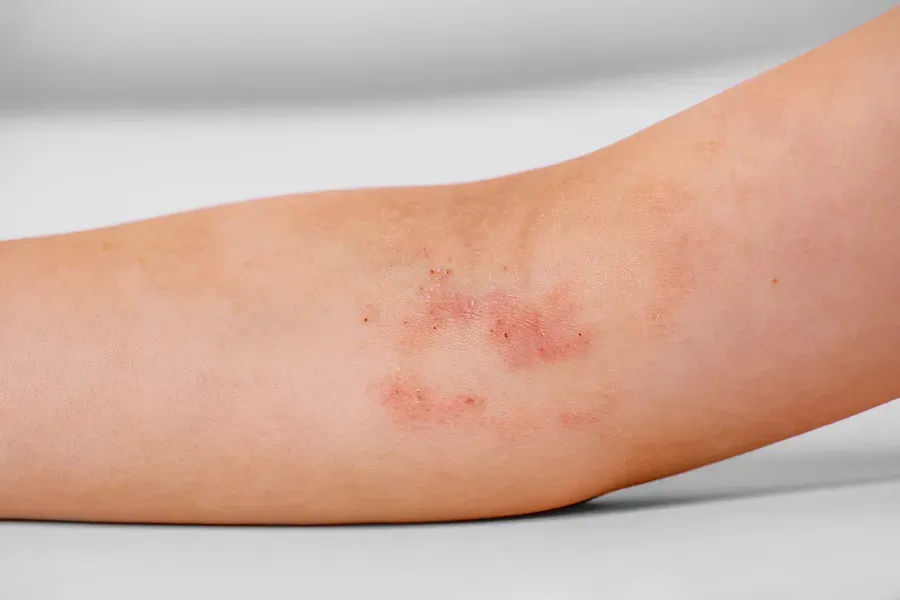Atopic dermatitis (AD) is a widespread, chronic inflammatory skin condition affecting millions globally, including children and adolescents, significantly impacting patients’ quality of life. It is characterized by impaired skin barrier function, leading to intense itching (pruritus), dry skin (xerosis), and inflammation. The pathogenesis of AD is complex and multifactorial, involving genetic predispositions, environmental factors, and immune responses.
Current therapeutic approaches for AD range from topical to systemic treatments, with topical options like moisturizers and corticosteroids being foundational. While indispensable, long-term use of conventional topical corticosteroids can lead to undesirable side effects such as skin atrophy, striae, rosacea, perioral dermatitis, acne, and purpura. Similarly, systemic treatments for moderate to severe AD, including monoclonal antibodies and various oral medications, often come with more severe adverse events and high costs, highlighting a pressing need for safer and broader therapeutic alternatives.
In recent years, research into cannabinoids—compounds that can be endogenous, plant-based, or synthetic—has intensified due to their promising therapeutic properties. Studies suggest that these compounds, when applied topically, orally, or subcutaneously, could offer a complementary approach to improve AD symptoms, primarily due to their anti-inflammatory, antipruritic, and antioxidant effects, with some also exhibiting antimicrobial properties. This growing interest stems from their potential to address the deficiencies of traditional treatments and provide a wider range of choices for managing AD.
Key Findings
The review highlights several key findings regarding the therapeutic potential of cannabinoids in treating atopic dermatitis:
• Multifaceted Therapeutic Properties: Cannabinoids, whether endogenous (e.g., palmitoylethanolamide (PEA)), plant-based (phytocannabinoids like cannabidiol (CBD) and Δ-9-tetrahydrocannabinol (THC)), or synthetic (e.g., dronabinol), have demonstrated anti-inflammatory, antipruritic, and antioxidant properties. Some also possess antimicrobial effects.
• Anti-inflammatory Actions:
◦ Cannabinoids modulate immune responses and regulate the endocannabinoid system to reduce inflammation in skin conditions like AD, contact dermatitis, and psoriasis.
◦ CBD is known to decrease the expression of proinflammatory factors such as NF-κB and TNFα, which can reduce the inflammatory activity of various pathways related to AD, including interleukins like IL-6, IL-1,14, IL-5, IL-13, and IL-1β.
◦ Topical THC demonstrated anti-inflammatory activity in mouse models of contact dermatitis, reducing immune cell infiltration and inhibiting IFN-ɣ, CCL2, CCL8, and CXL10 production.
• Antipruritic (Anti-itching) Effects:
◦ PEA, an endocannabinoid analogue, acts as a TRPV1 agonist to reduce itching, indirectly modulating CB2 receptors and inhibiting AEA degradation through an “entourage effect”.
◦ Topical formulations containing CBD/THC combinations and CBD alone significantly improved itching in patients with epidermolysis bullosa.
◦ Oral administration of dronabinol, a synthetic THC analogue, led to significant improvement in neuropathic itching in case reports.
• Antioxidant Benefits:
◦ CBD contributes to antioxidant properties on cell membranes, preventing lipid oxidation and reducing the formation of reactive oxygen species (ROS) by increasing endogenous antioxidant mechanisms.
• Skin Barrier Support and Hydration:
◦ CBD has been shown to stimulate sphingomyelinase activity in keratinocyte cultures, leading to an increase in ceramide levels. Ceramides are crucial for maintaining the epidermal structure and preventing water loss, which is often compromised in AD.
◦ A 1% CBD solution applied topically significantly increased skin water content and AQP3 (aquaporin-3) expression in a hairless mouse model, indicating improved skin hydration.
• Antimicrobial Activity:
◦ Cannabinoids, including CBD and THC, have demonstrated antimicrobial activity against various bacterial species, notably Staphylococcus aureus, which is frequently associated with severe AD.
◦ Other phytocannabinoids like cannabichromene (CBC), cannabigerol (CBG), and cannabinol (CBN) also exhibit potent activity against methicillin-resistant S. aureus (MRSA).
• Endocannabinoid System Modulation: The presence of CB1 and CB2 receptors in various skin cells, including keratinocytes, nerve fibers, mast cells, and macrophages, indicates that cannabinoids can modulate these receptors and TRP channels to exert their effects.
For future implications, while the evidence is promising, particularly from preclinical studies and case reports, the sources underscore the urgent need for further high-accuracy clinical and preclinical trials to establish the comprehensive efficiency and safety of cannabinoids for human use in AD. Currently, there is limited robust clinical evidence and a lack of well-documented case reports concerning adverse effects specifically related to topical cannabinoid use. Furthermore, significant legislative barriers and divergences in cannabinoid regulation globally hinder scientific research and the broader application of these compounds. Therefore, a crucial step for future progress involves the harmonization and liberalization of regulatory frameworks for Cannabis sativa among countries to facilitate continued scientific advancement, industrial production, and the therapeutic use of cannabinoid-based products for medical purposes. Beyond CBD and THC, further exploration of other phytocannabinoids like CBG and CBC is also warranted due to their dermatological benefits.
Link to the study: https://tinyurl.com/2s3v37br

